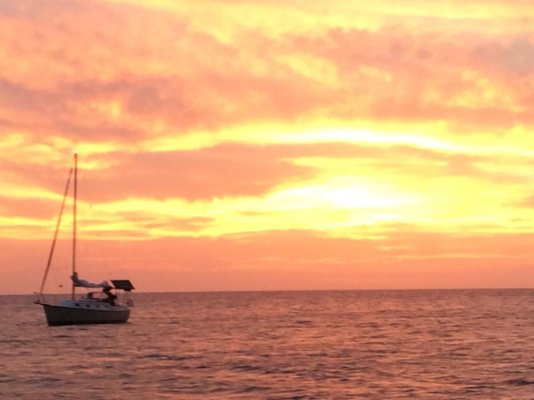Durant F
Guru
I was asked about my solar on another thread and thought starting a new one dedicated to solar would be best.
I’ve done solar for over 10yrs now both at an off grid cottage and on multiple boats.
First off..
-you need an “energy Budjet” meaning “how much do you use?”
Lights LED?
Fridge efficiency?
Freezer?
What other 12v draws do you have?
Charging laptop? Cell?
On and on...
Realize that anything...anything that creates heat is a no no with solar!
Try to figure how many amp hours you will use on a typical day
Then
You don’t want to run your batteries low...
They will cycle to 60% multiple times
Draw them down to 40% and your cutting lifespan significantly
If you need 100amp hours per day... you should have 300amp hours of batteries
Then, based on that, panel size... (and how much average daily sun?)
If you need 100amp hours charged and say, 6 hours of sun... you need a big panel capable of 15+ amps
So much depends on you..and how you set your boat up and use it.
There is no definitive answer... all depends on your situation
Here is what, from past and current experience I know works for me
- one large panel is simpler/better than multiples
-it must...MUST be adjustable so you can angle it for maximum exposure. A small adjustable panel with out perform a much larger fixed panel! Seriously!!
Mount it high and away from things that will shade it if possible.
-an MPPT controller is a must as well. So much more efficient!
-set your boat up for lower draw ei: LED everything, charge things while underway, even things as simply as shutting off your propane solenoid saves power! mount your panel for maximum exposure and adjustablility.
I do not expect to be solely on solar out here in the PNE. The sun is so unpredictable.
My southern sailboat is pure solar and I can be ON the hook for weeks.
My solar here is a fully adjustable 165 watt panel with an MPPT controller.
See tonight’s picture.
Tipped forward
Making 6.6 amps later in the day (8+ earlier)
Batteries at 13.6
I’ve also attached a picture of the panel tipped backwards.
To me, this adjustability is critical!
I’ve seen the panel making 1.8, then tipped it towards the sun and it will exceed 6 or more.
While I can’t “just” have solar out here in the fall season, I’ll have no need to start my generator tonight or in the morning before I leave. That said, if tomorrow was cloudy, by noon I’d be starting it.
I sailed a boat for 5 seasons, never plugged in, all LED and ran a “fridge only” with a 215watt panel and 4-105 amp hour gulf cart batteries
Beige boat picture
I sailed a much larger boat, never plugged in, fridge and nice size built in freezer, all LED with a 255 watt panel and 4-230 amp hour batteries
White boat pictures
Notice the panels tipped on all the pictures
Hope this helps
I’ve done solar for over 10yrs now both at an off grid cottage and on multiple boats.
First off..
-you need an “energy Budjet” meaning “how much do you use?”
Lights LED?
Fridge efficiency?
Freezer?
What other 12v draws do you have?
Charging laptop? Cell?
On and on...
Realize that anything...anything that creates heat is a no no with solar!
Try to figure how many amp hours you will use on a typical day
Then
You don’t want to run your batteries low...
They will cycle to 60% multiple times
Draw them down to 40% and your cutting lifespan significantly
If you need 100amp hours per day... you should have 300amp hours of batteries
Then, based on that, panel size... (and how much average daily sun?)
If you need 100amp hours charged and say, 6 hours of sun... you need a big panel capable of 15+ amps
So much depends on you..and how you set your boat up and use it.
There is no definitive answer... all depends on your situation
Here is what, from past and current experience I know works for me
- one large panel is simpler/better than multiples
-it must...MUST be adjustable so you can angle it for maximum exposure. A small adjustable panel with out perform a much larger fixed panel! Seriously!!
Mount it high and away from things that will shade it if possible.
-an MPPT controller is a must as well. So much more efficient!
-set your boat up for lower draw ei: LED everything, charge things while underway, even things as simply as shutting off your propane solenoid saves power! mount your panel for maximum exposure and adjustablility.
I do not expect to be solely on solar out here in the PNE. The sun is so unpredictable.
My southern sailboat is pure solar and I can be ON the hook for weeks.
My solar here is a fully adjustable 165 watt panel with an MPPT controller.
See tonight’s picture.
Tipped forward
Making 6.6 amps later in the day (8+ earlier)
Batteries at 13.6
I’ve also attached a picture of the panel tipped backwards.
To me, this adjustability is critical!
I’ve seen the panel making 1.8, then tipped it towards the sun and it will exceed 6 or more.
While I can’t “just” have solar out here in the fall season, I’ll have no need to start my generator tonight or in the morning before I leave. That said, if tomorrow was cloudy, by noon I’d be starting it.
I sailed a boat for 5 seasons, never plugged in, all LED and ran a “fridge only” with a 215watt panel and 4-105 amp hour gulf cart batteries
Beige boat picture
I sailed a much larger boat, never plugged in, fridge and nice size built in freezer, all LED with a 255 watt panel and 4-230 amp hour batteries
White boat pictures
Notice the panels tipped on all the pictures
Hope this helps
Attachments
-
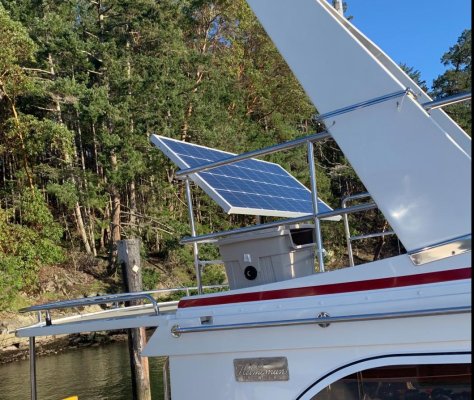 A8FE4665-127B-4A41-BA9A-FF925FC3ECA1.jpg204.3 KB · Views: 61
A8FE4665-127B-4A41-BA9A-FF925FC3ECA1.jpg204.3 KB · Views: 61 -
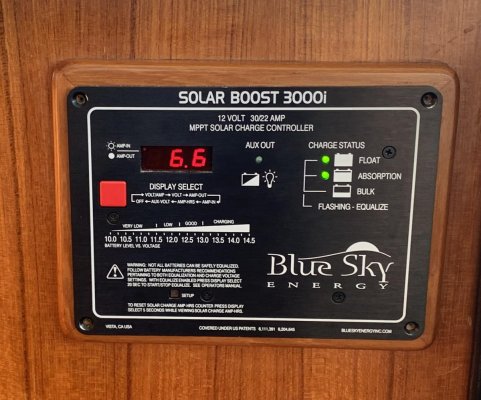 53FEFFF5-601F-4FCF-A34C-EE2A1F8E3BA2.jpg167.1 KB · Views: 51
53FEFFF5-601F-4FCF-A34C-EE2A1F8E3BA2.jpg167.1 KB · Views: 51 -
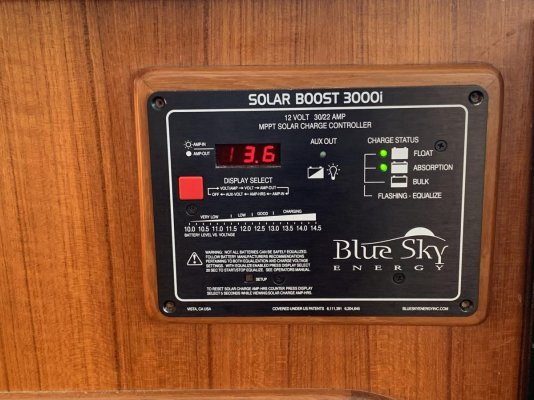 2908949E-71A1-477C-BD5A-EE674440ACCA.jpg162.2 KB · Views: 50
2908949E-71A1-477C-BD5A-EE674440ACCA.jpg162.2 KB · Views: 50 -
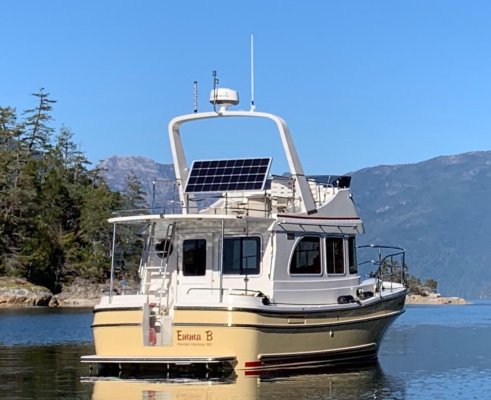 4DFA7E13-51D9-4936-8A09-924F94E7DD7E.jpg118.8 KB · Views: 57
4DFA7E13-51D9-4936-8A09-924F94E7DD7E.jpg118.8 KB · Views: 57 -
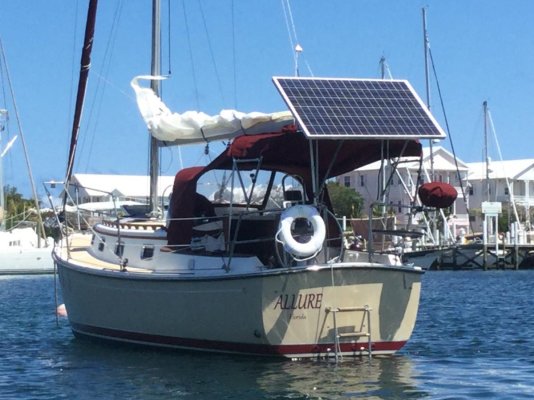 F1776CFC-6ADB-4D59-BE6C-08F14C4926B1.jpg125.1 KB · Views: 51
F1776CFC-6ADB-4D59-BE6C-08F14C4926B1.jpg125.1 KB · Views: 51 -
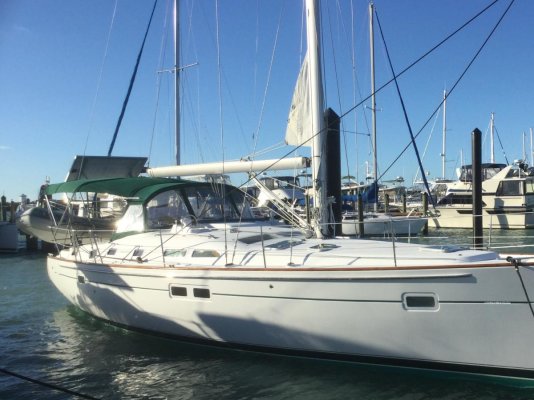 7BE87AF0-9203-4671-81DE-63F339842572.jpg132.4 KB · Views: 52
7BE87AF0-9203-4671-81DE-63F339842572.jpg132.4 KB · Views: 52 -
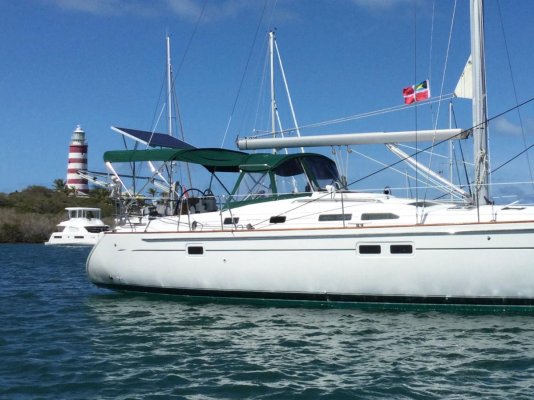 DF649AD9-D4FB-4A27-8953-B7AD327589CD.jpg140 KB · Views: 51
DF649AD9-D4FB-4A27-8953-B7AD327589CD.jpg140 KB · Views: 51
Last edited:

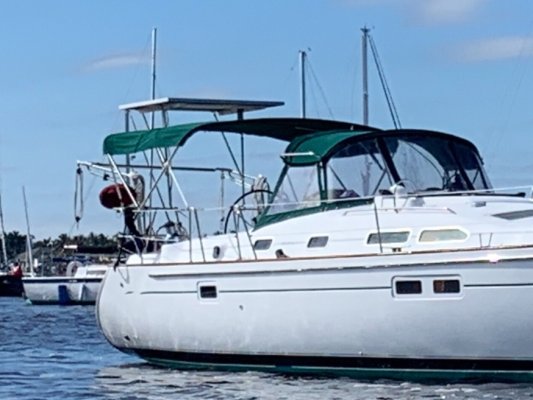
 Thanks Durant,
Thanks Durant,
